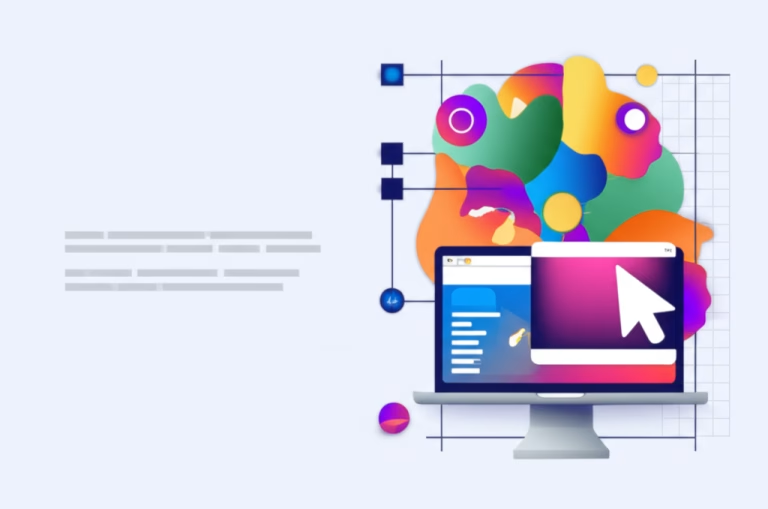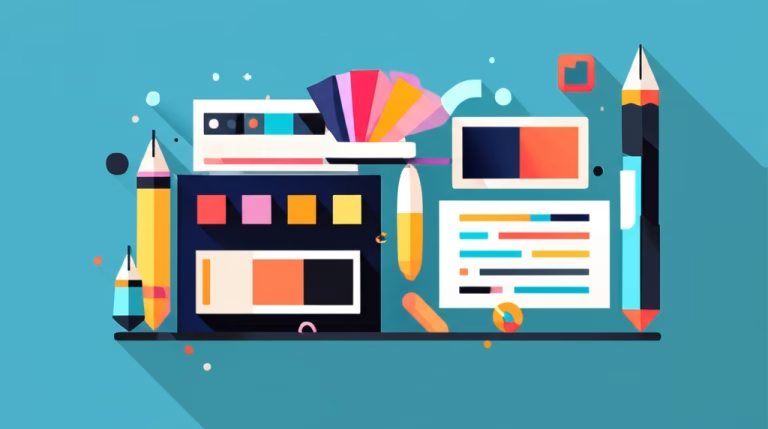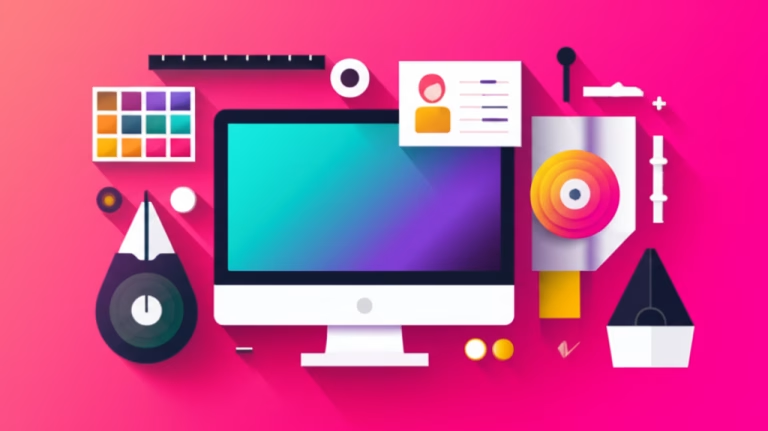The Transformation That Design Can Bring
Feeling a bit stuck when you try to create something? Maybe you look at amazing designs and wonder how those ideas even start? You are not alone! Every designer, no matter how experienced, has moments where the creative well feels a little dry. It’s a common hurdle, but finding your creative spark can completely change your experience. It’s like unlocking a hidden potential within you.
Discovering this spark isn’t some magical talent only a few people have. It’s a process, a way of seeing and interacting with the world that fuels your ideas. Once you learn how to tap into it, design becomes less about struggling for concepts and more about channeling exciting possibilities. This article will guide you through simple yet powerful ways to ignite your inner designer and keep that creative fire burning bright.
Table of Contents
The Hidden Power of Your Creative Spark
What exactly is this “design spark”? Think of it as that initial flicker of inspiration, the sudden insight that pops into your head, or the feeling of excitement when you see something that makes you want to create. It’s the starting point for every amazing design, the seed from which great visual stories grow. It’s not always a grand lightning bolt; sometimes, it’s a quiet nudge, a simple observation that triggers a chain reaction of ideas.
History and the world around us are full of examples where a simple spark led to incredible things. Think about the elegant simplicity of an iconic logo, born from a single thought or sketch. Or a user-friendly app interface that started with someone asking, “What if we made this easier?” These powerful designs didn’t appear out of nowhere; they began with someone finding and nurturing their creative spark, allowing that first idea to evolve into something impactful and beautiful.
The Three Dimensions of Finding Your Spark
1. The Emotional Dimension
Finding your creative spark deeply connects with your feelings. When you tap into it, you often feel a surge of excitement and motivation. It helps you push past frustration and keeps you engaged even when things are challenging. This emotional energy is a powerful driver in the design process, making it feel less like work and more like an exciting exploration.
- Journaling Ideas: Write down anything that catches your interest, your feelings, or random thoughts. This can reveal unexpected connections.
- Exploring Passions: Spend time on hobbies or interests outside of design. What excites you? This enthusiasm can spill over into your creative work.
2. The Functional Dimension
Creativity isn’t just about feeling inspired; it also has a practical side. Your spark helps you generate a variety of ideas and find effective solutions to design problems. It’s the engine for brainstorming and the source of those “aha!” moments when you figure out how to make something work or look just right. It helps you think flexibly and adapt your approach.
- Brainstorming Techniques: Try mind mapping, free association, or listing ideas without judgment to generate many possibilities quickly.
- Sketching Everything: Don’t wait for perfect ideas. Sketch out rough concepts, layouts, or elements. The act of drawing can unlock new thoughts.
3. The Aesthetic Dimension
The creative spark strongly influences the visual appeal of your designs. It helps you develop a unique style and make choices that result in appealing and harmonious visuals. It guides your eye for color, typography, layout, and imagery, making your work stand out and connect with viewers on a visual level. It’s about developing your taste and translating it into form.
- Creating Mood Boards: Collect images, colors, textures, and typography that capture a feeling or style you like. This creates a visual direction.
- Exploring Different Visual Styles: Study various design movements, artists, or contemporary trends. Experiment with incorporating elements you admire into your practice pieces.
Advanced Techniques That Ignite Creativity
Technique 1 – The Curiosity Dive:
This involves exploring subjects seemingly unrelated to design. Read about science, listen to different types of music, visit a museum, or learn about history. The goal is to expose yourself to new concepts, ideas, and perspectives. Ask “what if” questions connecting these new learnings to your design challenges. This cross-pollination of ideas can lead to truly original concepts you wouldn’t find by only looking at design work.
Expected result: Fresh perspectives and unexpected connections that break you out of typical design thinking patterns.
Technique 2 – The Constraint Challenge:
Instead of seeing limitations as negative, use them as prompts for creativity. Give yourself specific rules, like “design a logo using only circles,” “create a website layout with just two colors,” or “make a poster using only free fonts.” Working within boundaries forces your brain to find innovative solutions it might not explore with unlimited options. It turns potential roadblocks into creative springboards.
Expected result: Innovative solutions born from challenges, pushing you to think more resourcefully and cleverly.
Technique 3 – The Empathy Lens:
Put yourself deeply in the shoes of the person who will experience your design. Who are they? What do they feel? What do they need? Understanding your audience on a human level allows you to design with intention and create work that truly resonates. Consider their environment, their emotions, and their goals when interacting with your design. This technique makes your work more meaningful and effective.
Expected result: Designs that truly resonate and solve user needs because they are built on a deep understanding of the people they serve.
Obstacles That Can Dim Your Light
It’s natural to face challenges on your creative journey. Recognizing these obstacles is the first step to overcoming them and keeping your spark bright.
- Mental Obstacle
Things like self-doubt (“I’m not good enough”), fear of failure (“What if it looks terrible?”), or perfectionism (“It has to be perfect before I start”) can stop you before you even begin. These thoughts are common but can be managed.
How to overcome mindset limitations: Practice self-compassion. Start small. Remember that every designer makes mistakes. Focus on progress, not perfection. Celebrate small wins. - Technical Obstacle
Not knowing how to use design software, feeling overwhelmed by tools, or not having the “right” equipment can feel limiting.
How to overcome technical limitations: Start with simple, free tools. Focus on learning one thing at a time. Look for beginner tutorials. Remember that ideas are more important than fancy software initially. Practice consistently. - Resource Obstacle
Limited time, not having access to expensive resources, or struggling to find fresh inspiration can be frustrating.
How to overcome resource limitations: Schedule dedicated creative time, even if it’s short. Utilize free online resources (stock photos, fonts, tutorials). Look for inspiration in everyday places, not just design galleries. Connect with other aspiring designers for shared ideas and support.
Your Journey to a Brighter Creative Future
Finding and nurturing your design spark is an ongoing adventure. It’s not about reaching a final destination, but about consistently engaging with the creative process and allowing yourself to grow. Your capacity for creativity will expand the more you practice and explore.
Beginner Level (0-3 months)
At this stage, focus on exploration and experimentation. Your goals are to understand basic design concepts and get comfortable with simple tools. Practice regularly, even if just for 15-30 minutes a day. Don’t worry about creating masterpieces. Goals and practices for this level: Understand basic elements (color, line, shape), experiment with simple projects (like icons or patterns), follow tutorials, sketch ideas daily.
Intermediate Level (3-12 months)
You’re starting to get a feel for things. Focus on developing your own taste and tackling slightly more complex projects. Seek feedback on your work and learn from it. Start building a small collection of your best pieces. Goals and practices for this level: Develop a personal visual library, work on small portfolio pieces (like social media graphics or flyers), learn more advanced software techniques, actively seek constructive criticism.
Advanced Level (1+ years)
You have a solid foundation. Now, focus on refining your craft, exploring niche areas, and maybe even helping others. Push your own boundaries and try challenging projects. Continuous learning is key. Goals and practices for this level: Master specific software or design styles, take on personal projects that excite you, potentially mentor others, stay updated on industry trends, experiment with mixed media or new technologies.
Questions That Shape Your Creative Path
Thinking about the bigger picture can also fuel your spark.
Q: What are the future trends in finding inspiration?
A: Looking ahead, we might see more collaboration between humans and AI tools for brainstorming, and even more inspiration drawn from interdisciplinary fields like biology or physics informing design.
Q: How can I maintain my creative energy long-term?
A: Maintaining creative energy involves building sustainable habits: take regular breaks, explore hobbies outside of design to refresh your perspective, connect with other creatives for support and new ideas, and prioritize rest and well-being.
The Beginning of Your New Creative Era
Your design spark is within you, ready to be discovered and amplified. It’s nurtured by curiosity, practice, and a willingness to explore. Don’t be discouraged by creative blocks; see them as temporary pauses on your journey. Embrace the process, experiment freely, and trust that your unique perspective is your greatest creative asset. The world is waiting to see what you will create.
Accelerate your evolution by discovering our article about Design Fundamentals!



